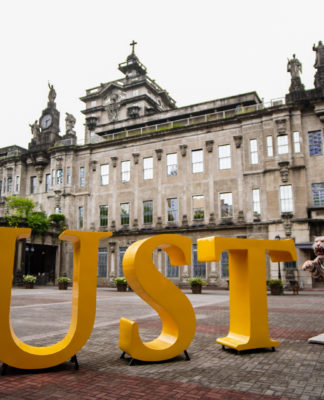COMIC books have been one of the important mirrors of Philippine culture.
First appearing as early as the turn of the 19th century, Filipino-made illustrations in the form of editorial cartoons were seen as a form of political expression. The public grew interest toward editorial cartoons that depicted socio-political issues and soon they gained prominence.
Historians attribute the creation of the first comic strip made by a Filipino to Jose Rizal.
In the years after the First World War, an industry was born when Tony Velasquez’s most famous work, Ang Kabalbalan ni Kenkoy, became the first comic book in the country published by Liwayway magazine in 1923. Since then, comic books have been part of Filipino culture.
Comical Thomasians
Since its emergence in the Philippine setting, the comics industry has featured various talented Thomasians, among them, Rizal.
According to Jose Victor Torres, historian and professor at the De La Salle University, the first comic strip made by a Filipino can be traced to Rizal and his sketches of his famous story, Ang Matsing at ang Pagong.
One of the modern comics pioneers is Tony DeZuñiga, a College of Architecture and Fine Arts (Cafa) alumnus, who is considered as one of the greatest pioneers of Philippine comics.
DeZuñiga, who started out as a letterer in one of the pioneering comics’ publisher of the country, Liwayway, created Jonah Hex, an antihero cowboy, and Black Orchid, a psychic and superhuman heroine.
He first introduced the archetypal heroes and villains to the industry which formed the groundwork for today’s modern hero-based comics.
In 1988, another Thomasian, Apolonio “Pol” Medina, Jr., gained the spotlight of Philippine comics when his most famous work, Pugad Baboy, was first published in the Philippine Daily Inquirer.
Pugad Baboy would become one of the most humorous and longest-running comic book series in the country. It depicts a typical Manila community through their ordinary yet hilarious daily slices of life.
Comics today
Comics became prominent as soon as publishers in the 1950’s to the 1990’s saw their potential as a marketing and entertainment tool.
In his book, John Lent said the 1950’s were dominated by the “big three”: Mars Ravelo, Francisco Coching and Clodualdo del Mundo. The decade also ushered in the birth of the ace publications of komiks: Pilipino Komiks, Hiwaga Komiks, Espesyal, and Tagalog Klasiks.
Then other talents such as Alfredo Alcala, Gerry Alanguilan and Nestor Redondo came into the picture, their unique works entertaining the Filipino audience for many years.
A more modern Thomasian artist, Jon Zamar, an Architecture alumnus and organizer of the annual Komikon, a Filipino version of comics convention, said that media played a big role into shaping the comics industry in the 90’s up to the present.
“The Internet has diversified the style of comic artists today, with any information practically accessible at any point in time, pictures of other comics or styles, the Filipino comic artist now takes many forms and styles,” said Zamar, who is also the creator of Bathala, a heroic comic book series featuring multi-faceted heroes.
Zamar said the comic book industry took a hit in the late 1990s, a time when publishers of revered comics decided to invest in animation—a move that did not yield the expected results.
According to Visconde Carlo Vergara, a Filipino illustrator and comic artist best known for his original work, Zsazsa Zaturnnah, the comic industry has grown over the past decade.
“The number of titles and creators has increased significantly, and comics have been getting more exposure in mass media,” said Vergara. “During the early 90’s, the ‘new generation’ of comics creators—a handful of people who were chasing a dream—didn't really know how to go about things and were doing it largely out of passion.”
With much of the comic artists going abroad for better opportunities in large firms, the industry at the Philippines is at a threat, Vergara noted. He said that one effective measure for the industry to grow in the Philippines is to build a business model to publicize the importance of comics through modern media like the internet.
“So the challenge is three-fold: Developing content that people will want to read and follow, pushing the idea of comics to the public as a satisfying entertainment alternative,” Vergara said.















It’s worth noting that we’re now seeing an increase of comicbook conventions in different parts of the country – which is, of course, a good sign. Also, Visprint and Black Ink are major publishers that have nationwide distribution and reach. Hope we have more events and more publishers in the future!